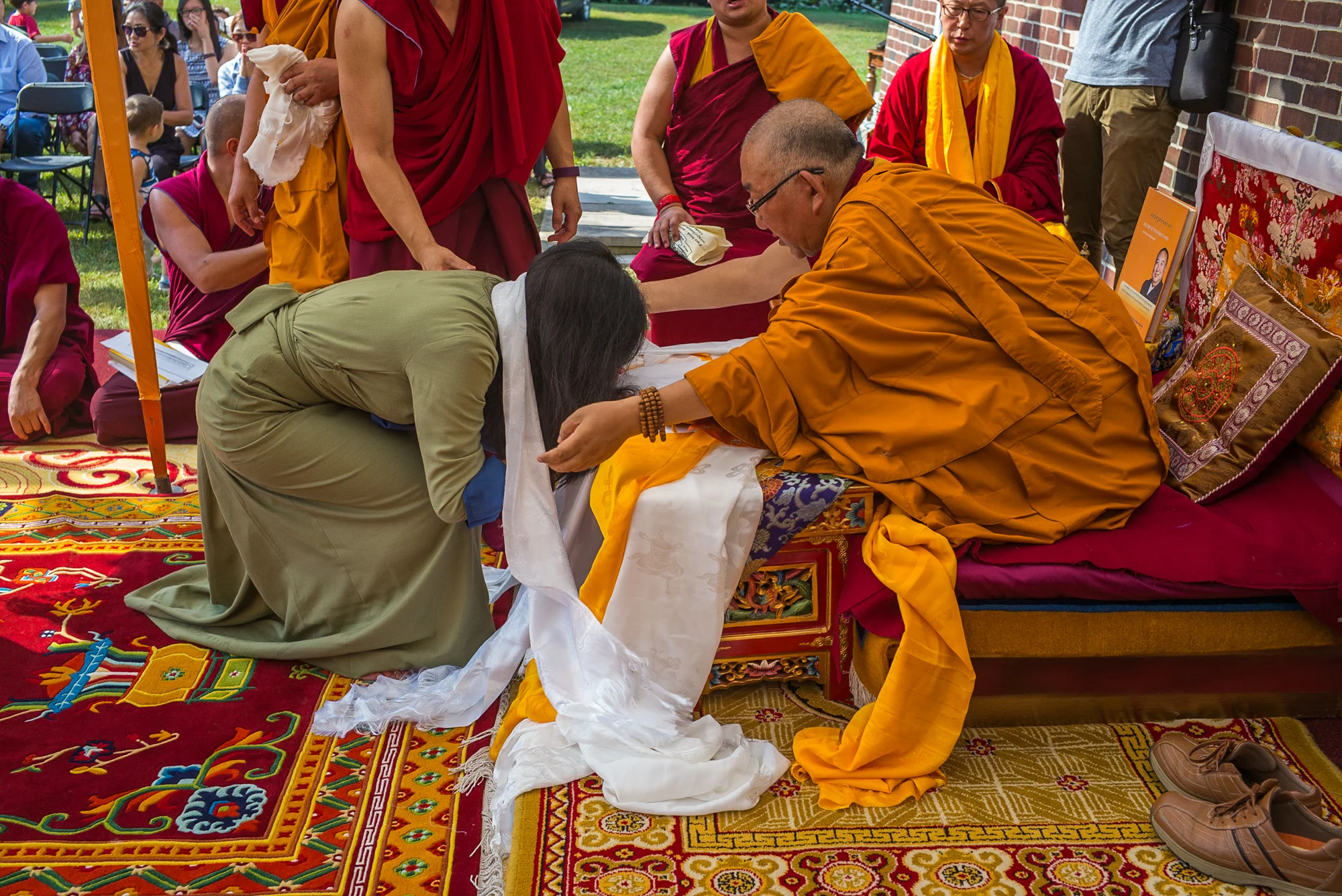Ven. Arjia Rinpoche
In September of 1950 near Amdo, Tibet an infant boy was born into a nomadic Mongolian family who had made the Dolon Nor steppe region their adopted home; he was given the infant name of Lung Drung Dorje by his parents. Just before his second birthday, a committee of ten august monks from Kumbum monastery arrived. After stringent evaluation, the monks determined that Lung Drung Dorje was the reincarnation of the 7th Arjia Rinpoche.
At Kumbum monastery, Lung Drung Dorje would be enthroned as the 8th Arjia Rinpoche in an elaborate and auspicious ceremony. His parents would stay with him in the monastery for the first six months, while he adjusted to his new environment.
At eight years old, Rinpoche was forced to abandon his monk’s robes and monastic studies and was placed in a communist “reeducation” program that was put in place at Kumbum. He went from being treated as a revered reincarnated lama to being the target of derision, malice and ridicule by the Communist Chinese who occupied his monastery. At the age of fourteen, Arjia Rinpoche along with other monks from his monastery were forced to work on labor details where they would be made to dig a 37 mile long trench between two towns. Arjia Rinpoche would be held captive for 16 years in forced labor.
Following Mao Zedong's death in 1976, Arjia Rinpoche was released from forced labor at the age of thirty and was named abbot of Kumbum Monastery. Under the tight control of Tibet’s Communist Chinese occupiers, Rinpoche was forced into the role of an administrator with his activities as a spiritual leader and teacher being strictly limited. Nonetheless, this position led to even higher positions, including vice-chairman of the Chinese Youth Association, vice president of the Central Government’s Buddhist Association, and member of Beijing’s Central Government.
As the years wore on, maintaining the charade of loyalty to the Communist regime took its toll on Rinpoche. In order to meet the incessant demands of higher up bureaucrats, Rinpoche was forced to abandon the Buddhist beliefs and principles that had been instilled in him by his dharma teachers during the earlier years of his life. His life became increasingly intolerable until a breaking point was reached; he could take no more. He made the decision to flee Communist China and seek refuge in the west, a decision that brought with it the very real possibility of capture by the Chinese authorities which would result in imprisonment, probable torture and possible death. With the help of others - both inside and outside of China - Rinpoche took that awful chance and made good his escape, taking a small group of associates and friends with him.
Upon his arrival in the United States, Rinpoche met with the Dalai Lama; with His Holiness’ assistance the U.S. Government granted Arjia Rinpoche political asylum along with those who had escaped with him. Rinpoche made his home in Mill Valley, California and started a dharma center there.
In 2005, the Dalai Lama appointed Arjia Rinpoche to oversee of the Tibetan Mongolian Buddhist Cultural Center (TMBCC), in Bloomington, Indiana where he now serves as director of this not for profit dharma center, Buddhist temple and growing monastery. In September of 2018, the Tibetan Mongolian Buddhist Cultural Center will celebrate its 40th anniversary, having been established in 1979 by Thubten Jigme Norbu, the 14th Dalai Lama’s older brother.
“I have some sandalwoods seeds in my robe that I saved from Kumbum. I will plant them here, in Indiana at Kumbum West. What will arise from them? we shall see. ”














